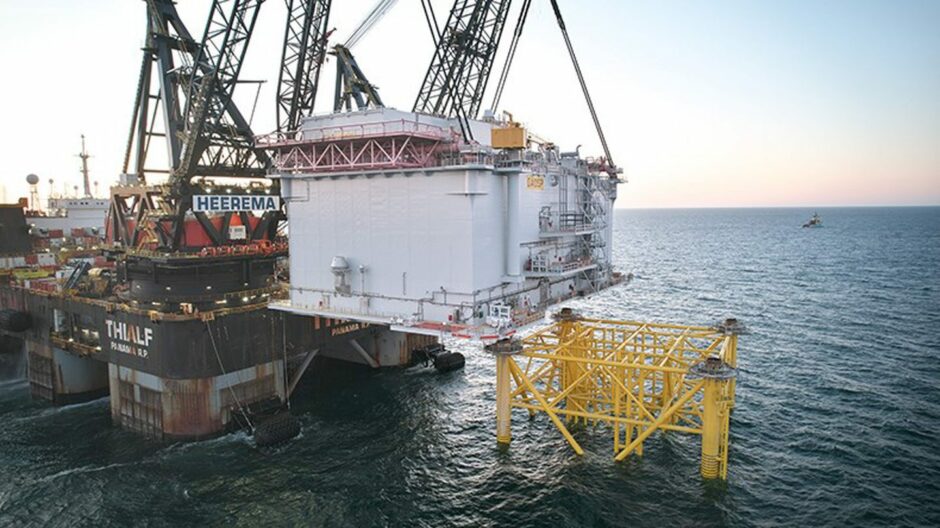
The world’s first unmanned high voltage direct current (HVDC) offshore substation has been installed at Dogger Bank wind farm off the Yorkshire coast.
Developer SSE Renewables confirmed on Thursday that the first of three HVDC platforms slated for the site is now in place.
Supplied by Aibel and installed by principal contractor Sapiem, the Dogger Bank A platform measures 65 x 36 metres across and 39m high and sits on a four-legged steel jacket foundation which is fixed to the seabed, in water depth of around 28m.
It lies approximately 90 miles from the nearest point of land at Flamborough Head, near Bridlington in East Riding of Yorkshire, the platform.
Based on a “lean design” the topsides represent the first ever unmanned HVDC platform, and will be operated from shore with technician and maintenance visits carried out by a service operations vessel (SOV).
The platform will receive 1.2GW of AC power from Dogger Bank A’s 95 offshore wind turbines and convert it to DC, which will then be sent ashore to an onshore convertor station near Beverley in East Riding of Yorkshire.
Dogger Bank will also employ HVDC converter technology from Hitachi Energy, reportedly the first offshore wind project in the UK to use the system.
First power from Dogger Bank A is expected this summer.
Together, the 3.6GW of capacity at Dogger Bank A, B & C, and will be able to power the equivalent of 6 million UK homes on completion. The wind farm is a joint venture between SSE Renewables (40%), Equinor (40%) and Vargrønn (20%).
Dogger Bank project director Olly Cass said: “The safe and successful installation of the offshore platform marks a major milestone in the Dogger Bank project. As the UK’s first HVDC platform for an offshore windfarm it is also a major milestone for the UK industry more widely.
“The platform will be controlled from shore and by removing the need for personnel to stay on the platform meant it has been possible to eliminate elements such as the living quarters, helideck and sewage systems, resulting in a 70% reduction in weight (per megawatt) of the topside compared to previous platforms installed, and cost savings of hundreds of millions of pounds.
“Teams continue to make good progress with the installation of turbine foundations and later in Q2 specialist cable installation and support vessels will start to install the inter-array network of cables that will connect the turbines to the offshore platform to enable transmission of first power in the summer.”
It’s the latest milestone in the project, following the opening of an operations and maintenance (O&M) base at the Port of Tyne last month.
Meanwhile partners Equinor and SSE are also exploring a potential fourth phase, Dogger Bank D, in which they would each own a 50% stake.
Recommended for you
